This following text is from a post on a Tynemouth History Facebook group on a topic that has been sitting fragmented in my mind for some time. The commments and discussion, though relevant and extremely enlightening, are far too numerous to summarise here.
The surprising thing was that once I posted this basic theory of the water courses and springs that run through and below Tynemouth, several new (old) wells in the village came to light, providing what developed into a fairly extensive map of the hydrological features of the village. My conjectures are by no means authoritative or academically rigorous, but I think this post does provide a basis for a further survey of Tynemouth’s wells and further appreciation of what has always been here beneath us.
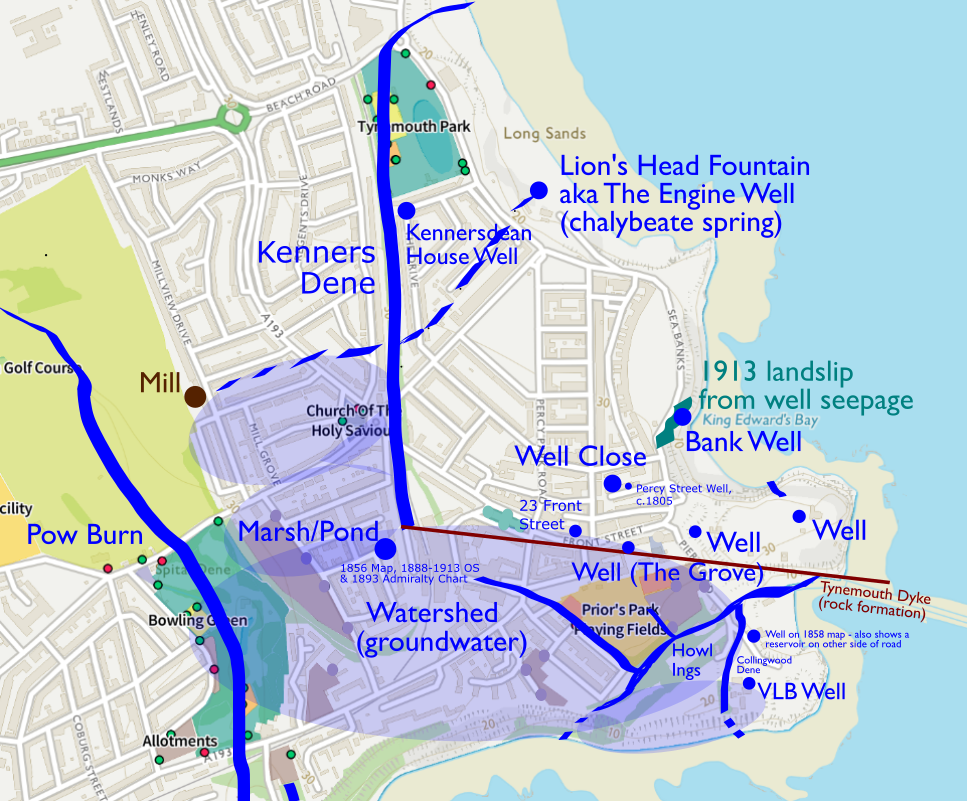
“One thing many don’t realise about Tynemouth is that it has a very high water table. And I often wonder what the landscape was like before the village was really settled. The few maps there are tell you little.
Basically, everything south of Front Street and Manor Road on the incline towards the ‘Howl Ings’ (Priors Dene) was boggy and the gully that leads to the walkway onto the Pier would have been the outlet for water coming ultimately from the Pow Burn in Spital Dene, when that was an actual waterway.
The flow would have started, I’m guessing, near where the mill was at the top of Edith Street and Dene Road and would have carried on to where the station is and flooded that area and saturated the land beyond there all the way to the Haven.
I also believe that a burn forked the other way from Holy Saviours and the top of the Station bank down to the Longsands, ending at the spring where the Lion Head Fountain lays beneath the sand, as well as down ‘Kenners Dene’ to flow out at the bottom of Beach Road, because the gully down to the seafront there also points to a water course. And there is also the spring at the top of the Longsands below Beaconsfield and we know the playing fields on Links Road had a large storm drain put in a few years ago. So there’s water flowing all the way down through Tynemouth.
That leaves the village as a sort of island from the Three Corner Field all the way to the south side of Front Street. Within that area there is Well Close, so the main well for the village must have been there? And the Castle grounds has two wells (although I’m not sure if one or both of them are in fact ventilation for something more recent). But at one time they must have been functioning wells as Penbal Crag is also heavily waterlogged.”
Historical Observations
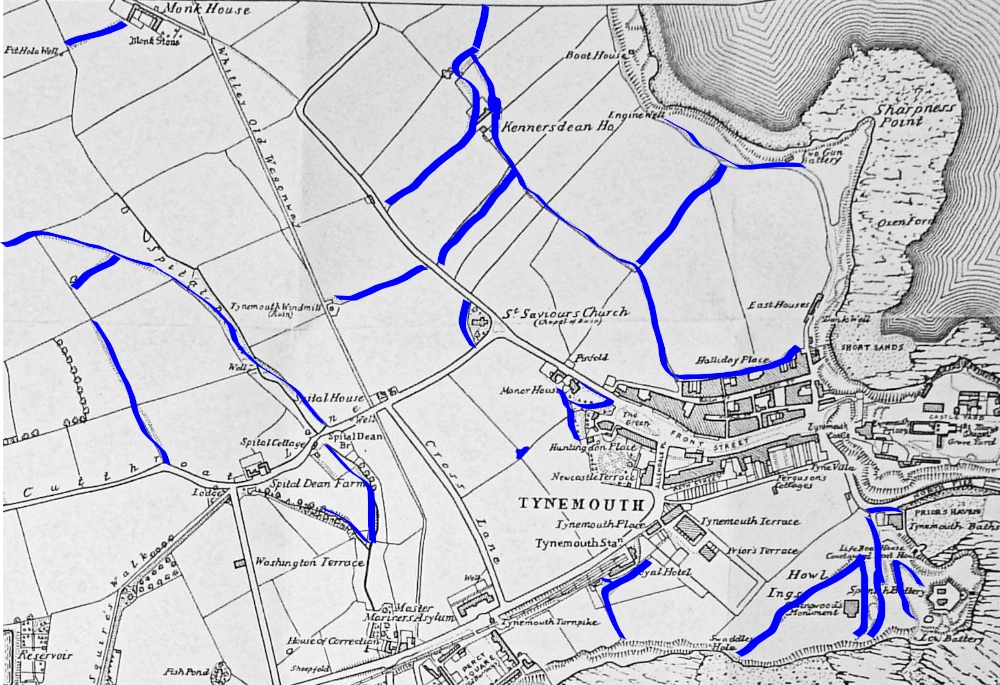
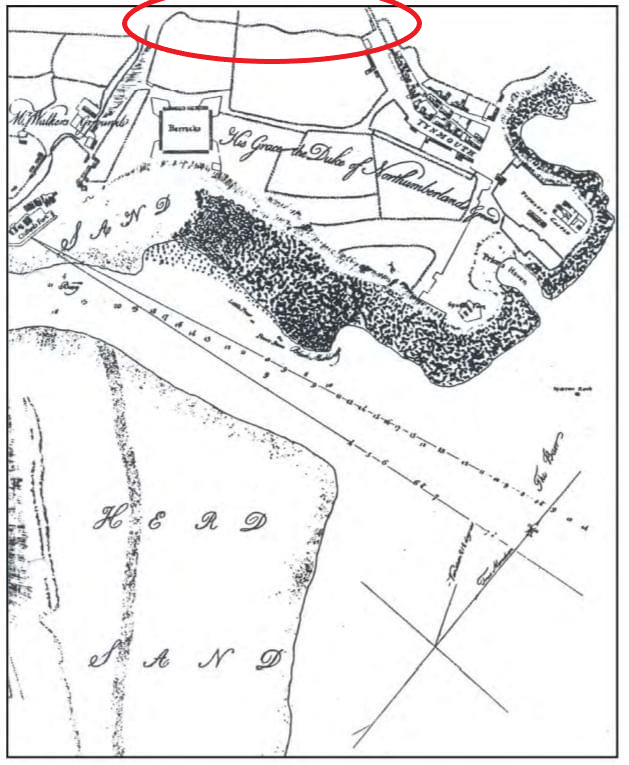
The nature of the water supply: “In rural areas the supply was even worse supplied, than the town (of North Shields) district of the Borough. Tynemouth possessed several private wells but the water was of very bad quality, hard, occasionally brackish and very often producing diarrhoea in persons unaccustomed to its use and sometimes to its residents as well. It was often remarked that horses got out of condition in Tynemouth and the cause was undoubtedly the bad water. There was only one public well in the Village, it was twenty-eight feet deep. Some older people had stated that it was once nearly full, afterwards it stood at eight, then at five and now in 1851 it was only three feet deep. It was so bad in quality that it was unfit either for cooking or washing with, but it was the only water that could be obtained”.
Deficiency of the drainage: “Beyond the limits of the Improvement Act, there was no superintendence whatsoever. The township of Tynemouth for instance, with 250 houses had no system of street cleansing at all. It was under the Surveyors of the Highways and cleaned only once a week or once a fortnight; during the periods in between all the refuse lay on the streets. There was no dereliction of duty on the part of the Surveyors, for it was not their business to clean the streets”.
William Ranger report for the Board of Health, 1851 (a preliminary enquiry into the sewerage, drainage and supply of water, and the sanitary condition of the inhabitants of the Borough of Tynemouth).
In the following year new pipes were laid to bring fresh water from the North Shields Water Company.
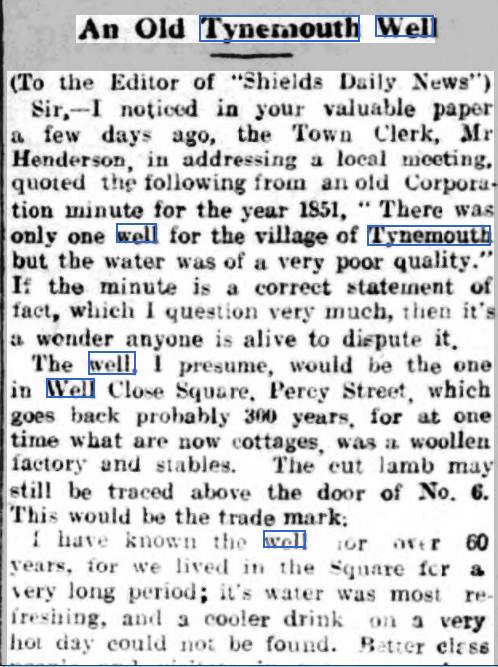
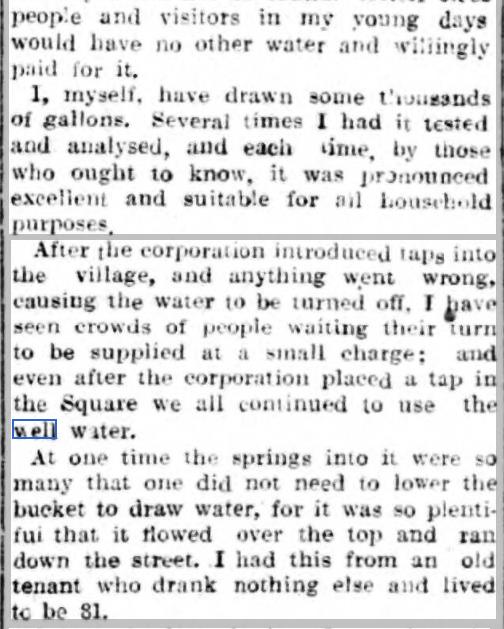
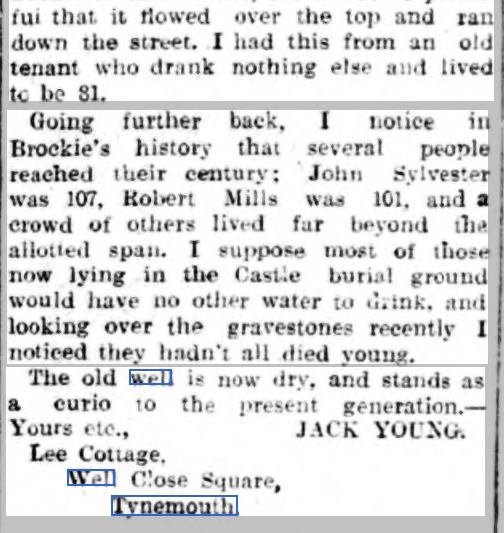
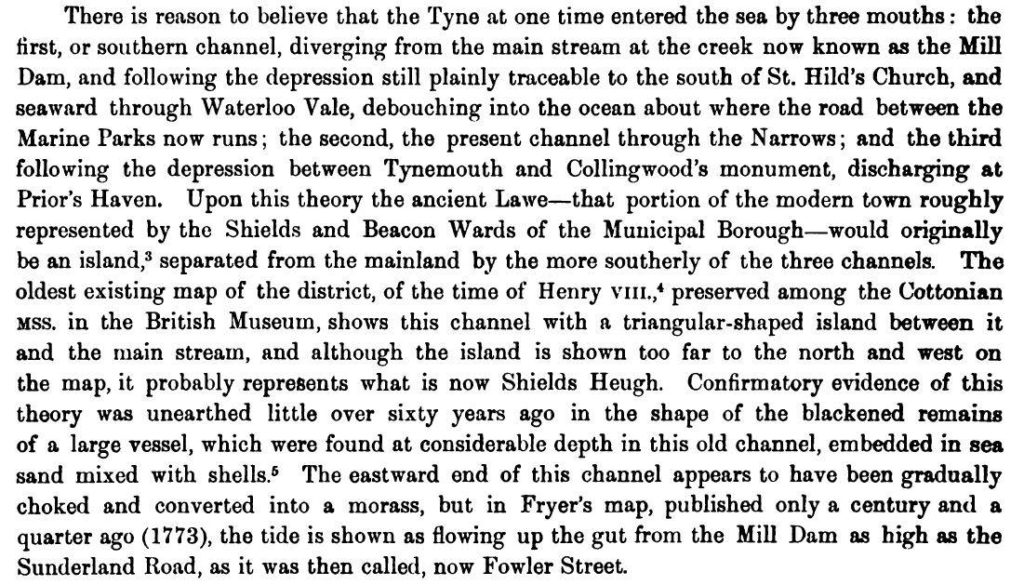





Hi, I was born in Tynemouth but now live in Canada. My roots remain in Tynemouth however and I have tons of books on the local area, still feel like I belong. Just watching Penbal on YouTube and thought you might have some info on this…
Spanish armada beaten by the British in the English Channel were blocked from returning to Spain. So, once ly option was to sail all the way round Britain , down the West coast of Scotland/Ireland and back to Spain. On the way up and around Britain, they stopped off for supplies, food, water. Some probably stayed put. So, the ‘Spanish Battery’ and ‘Spanish City’ get their name from these encampment
But, there’s little information in this period. Do you know any more?
Love the channel, keep it up.
I have another for you about light bulbs. Another time.
Geoff Wall
Hi Geoff, I believe the Spanish Battery is named after the mercenary troops of Julian Romero, who was stationed in Northumberland at the time of Henry VIII https://en.wikipedia.org/wiki/Juli%C3%A1n_Romero